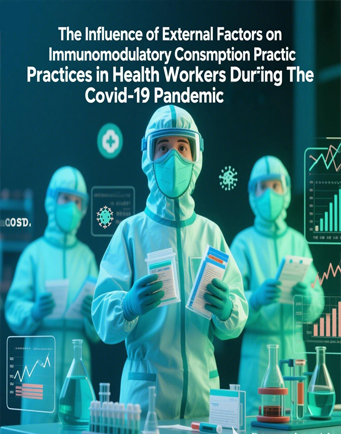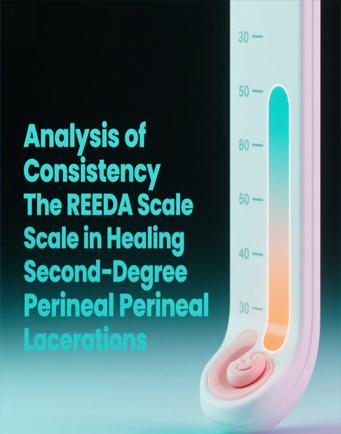Labor Qualification in Various Classification of Bulk Food
Tinjauan Berdasarkan Jumlah Konsumen dan Jenis Menu Yang Disajikan
Downloads
Labor requirements on the food services can be influenced by the type or the type of menu that is served (menu option or standard menu/set), a number of customers served and characteristics, manner of presentation/foodservice and food processing techniques used. The purpose of this study was to analyze the manpower needs of consumers in terms of number and type of menu served in various classifications of food services. This research is a descriptive exploratory descriptive design. The sampling technique research conducted by purposive sampling method, research carried out for 3 (three) months, starting month from July to October 2015. The variables studied were the number of consumers served, number of workers, a qualified workforce, and the type/types of menu that are used. Data were collected by interview with the manager of the implementation of food assisted questionnaires and direct observations on the foodservice. The data is processed and analyzed descriptively, then presented in tabular form. The result showed that the number and qualification of labor needed in the various classifications of food services, most are high school or vocational school graduates, with the main task generally is a food processing power. Special hospital for the provision of food needed nutritionist with 1:57 lowest and the highest ratio of 1: 400. At food services in addition to the hospital, the need is determined by the number of consumers served and depending on the extent of the physical building of the institution. Kind/type menus presented on the hospital food service, boarding, catering, social institutions, and school children are the menu cycle. While the implementation of commercial food using the options menu (selected menu). Given the number and qualification of manpower needs of each institution organizing food can not be used as a standard, it is necessary assessments using calculations based on the analysis of the workload of each field of labor tasks.
Astiena, A. K., Darwin, D., Fitrini. 2011. Analisis Kebutuhan Tenaga Berdasarkan Beban Kerja di Instalasi Farmasi Rsud Pasaman Barat Tahun 2011. Online: http://pasca.unand.ac.id/id/wp-content/ uploads/2011/09/ Analisis-Kebutuhan-Tenaga-Berdasarkan-Beban-Kerja.pdf (Diakses Pada Tanggal 2 Juli 2015).
Departemen Kesehatan RI, 2004, Keputusan Menteri Kesehatan Republik Indonesia No. 81/MENKES/SK/I/2004 tentang Pedoman Penyusunan Perencanaan SDM Kesehatan di Tingkat Propinsi, Kabupaten/Kota serta Rumah Sakit.
Fitrini, Adila Kasni A dan Deswinar Darwin, Analisis Kebutuhan Tenaga berdasarkan Beban Kerja di Instalasi Farmasi RSUD Pasaman Barat tahun 2011; Program Pasca Sarjana Universitas Andalas Padang.
Ilmi, N., Dachlan, D. M., Yustini. 2014. Gambaran Sistem Penyelenggaraan Makanan Di Pondok Pesantren Putri Ummul Mukminin Makassar. Program Studi Ilmu Gizi Fakultas Kesehatan Masyarakat Universitas Hasanuddin. Online: http://222.124.222.229/bitstream/ handle/123456789/10640/NURUL%20ILMI% 20K21110290.pdf/sequence=1 (Diakses Pada Tanggal 26 Juni 2015).
Irianton Aritonang, 2012. Penyelenggaraan Makanan – Manajemen Sistem Pelayanan Swakelola dan Jasaboga di Instalasi Gizi Rumah Sakit; Yogyakarta: Leutika.
Kemenkes RI, 2013; Pedoman Pelayanan Gizi Rumah Sakit (PGRS). Ditjen Bina Gizi dan Kesehatan Ibu dan Anak Kemenkes RI; Jakarta .
Kemenkes RI, 2013. Peraturan Menteri Kesehatan RI nomor: 26 tahun 2013 tentang Penyelenggaraan Pekerjaan dan Praktek Tenaga Gizi. Kemenkes RI. Jakarta.
Nursiah A. Mukri, 1990. Manajemen Pelayanan Gizi Institusi Dasar dan Lanjut. Jakarta: Proyek Pengembangan Pendidikan Tenaga Gizi Pusat Bekerja Sama dengan Akademi Gizi Departemen Kesehatan RI.
Shipp, P.J. Workload Indicators of Staffing Need (WISN). Manual for Implementation. Initiatives. Inc, Boston USA. 1998; 1: 165.
Putri, A. N. H. 2012. Penyelenggaraan Makanan, Konsumsi Pangan, Dan Status Gizi Residen Di Unit Pelaksana Teknis Terapi Dan Rehabilitasi Badan Narkotika Nasional. Skripsi. Bogor: Fakultas Ekologi Manusia Institut Pertanian Bogor.
Sjahmien Moehji, 1992; Penyelenggaraan Makanan Institusi dan Jasa Boga. Bharata Niaga Medik, Jakarta.
Soekirman, dkk. 2006. Hidup Sehat. Jakarta : PT Primadia Pustaka.
Sumanto. 1990. Metedologi Penelitian Sosial dan Pendidikan. Yogyakarta: Andi Ofset.
West, Bessie B and Wood, Levelle. 1988. Foodservice Institutions. New York: John Willey & Sons.
Copyright (c) 2019 JURNAL INFO KESEHATAN

This work is licensed under a Creative Commons Attribution-NonCommercial-ShareAlike 4.0 International License.
Copyright notice
Ownership of copyright
The copyright in this website and the material on this website (including without limitation the text, computer code, artwork, photographs, images, music, audio material, video material and audio-visual material on this website) is owned by JURNAL INFO KESEHATAN and its licensors.
Copyright license
JURNAL INFO KESEHATAN grants to you a worldwide non-exclusive royalty-free revocable license to:
- view this website and the material on this website on a computer or mobile device via a web browser;
- copy and store this website and the material on this website in your web browser cache memory; and
- print pages from this website for your use.
- All articles published by JURNAL INFO KESEHATAN are licensed under the Creative Commons Attribution 4.0 International License. This permits anyone to copy, redistribute, remix, transmit and adapt the work provided the original work and source is appropriately cited.
JURNAL INFO KESEHATAN does not grant you any other rights in relation to this website or the material on this website. In other words, all other rights are reserved.
For the avoidance of doubt, you must not adapt, edit, change, transform, publish, republish, distribute, redistribute, broadcast, rebroadcast or show or play in public this website or the material on this website (in any form or media) without appropriately and conspicuously citing the original work and source or JURNAL INFO KESEHATAN prior written permission.
Permissions
You may request permission to use the copyright materials on this website by writing to jurnalinfokesehatan@gmail.com.
Enforcement of copyright
JURNAL INFO KESEHATAN takes the protection of its copyright very seriously.
If JURNAL INFO KESEHATAN discovers that you have used its copyright materials in contravention of the license above, JURNAL INFO KESEHATAN may bring legal proceedings against you seeking monetary damages and an injunction to stop you using those materials. You could also be ordered to pay legal costs.
If you become aware of any use of JURNAL INFO KESEHATAN copyright materials that contravenes or may contravene the license above, please report this by email to jurnalinfokesehatan@gmail.com
Infringing material
If you become aware of any material on the website that you believe infringes your or any other person's copyright, please report this by email to jurnalinfokesehatan@gmail.com.





































